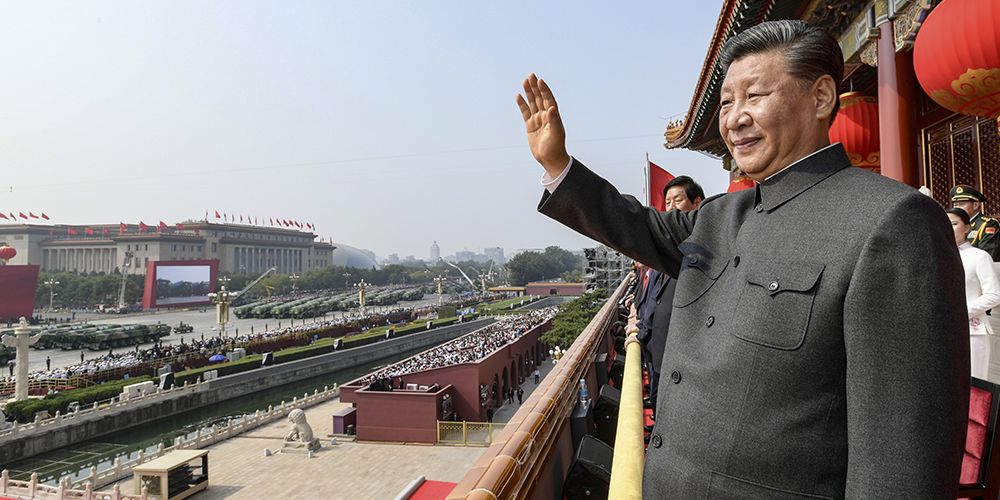Search

Publications
China’s policy in the Caspian Region

China is basing its policy in the Caspian Region on combining the resources of its bilateral models with Russia, Kazakhstan, Azerbaijan, Turkmenistan and Iran, and the capabilities of joint regional projects in transportation and energy. Taking into account the self-sufficiency and the vastitude of Russian-Chinese agenda requiring a separate review, this article analyzes the bilateral formats of the PRC with four other Caspian countries (Kazakhstan, Turkmenistan, Iran and Azerbaijan), the specifics of the Chinese policy in the Caspian region in general.
As per Chinese data, the Caspian off-shore oil reserves are estimated as 32.7 bn tonnes, i.e., approximately 18% of global reserves. As for natural gas, its reserves account for circa 14 tln cubic meters, i.e., approximately 4.3% of global reserves. Azerbaijan and Kazakhstan account for about half of the hydrocarbon reserves, and 95% of all the Azerbaijanian oil is in the Azerbaijan’s section of the Caspian shelf. About 30-40% of total oil reserves of Kazakhstan and Turkmenistan are also found in the respective sections of the Caspian shelf. The Caspian strategy of China is obviously focused on the hydrocarbons track, it is subject to on-going diversification and updates starting from 1991 – the year when the post-Soviet republics gained independence.
The second key component of the Chinese strategy is using the Caspian region in the transport and transit policy including various routes and logistics combinations, such as Europe – China, Middle East – China and others. After the «One Belt and One Road» initiative was launched in 2013 and its various overland alternatives were reviewed, Beijing’s transport-related motivation grew significantly. New expensive projects updating the Caspian section of the Great Silk Route were integrated into the «old» transportation projects.
Chinese-Kazakh model
China’s participation in the energy sector of the economy of Kazakhstan is associated with the development of oil fields in Aktyubinsk, Atyrau, Mangistau, Kyzylorda and Karaganda regions; preparation for exploration and development of Darkhan offshore oil and gas field; Atasu-Alashankou oil pipeline throughput expansion; LPG supplies from Kazakhstan by rail via Alashankou check-point, etc. The key volumes of exported oil go from Kazakhstan via Caspian Pipeline Consortium, which are operated by companies from the Russian Federation and the Republic of Kazakhstan together with certain Western corporations.
The story of Chinese participation in pipeline transportation starts in late 1990s – early 2000s. The first Chinese-Kazakh oil pipeline was Kenkiyak-Atyrau launched in 2003 with annual throughput from 6 to 12 mln tonnes. However, Atasu-Alashankou oil pipeline became the key export project, in which China invested USD 800 mln. [1]
Chinese-Kazakh Atasu-Alashankou oil pipeline was brought on stream in 2006, it is 962.2 km long. It begins in Western Kazakhstan in Atasu and ends in Alashankou in Xinjiang Uygur Autonomous Region of China. It is part of Kazakhstan gas transportation system comprising Caspian ports and Atyrau-Samara operating pipeline with 20 mln tonnes annual throughput.
Chinese-Kazakh investment model in based on PRC’s dominance and annual growth of investment. In 2021, the Chinese investment was estimated at USD 34.23 bn. The main for that China uses is issue of low-interest (1.5-3%) and long-term (up to 20 years) loans for developing mineral resources and energy resources (75% of all Chinese investment in Kazakhstan); part of the facilities are either granted to Chinese companies as concessions or bought-out by them.
The Kazakh variant of the «Bright Path / Nurly Zhol» initiative is closely connected with the Chinese «One Belt and One Road»; hence, Beijing developed the project of interlinking the two initiatives. According to the Chinese sources, Kazakhstan invested around USD 30 bn into its projects over the recent 10 years: around 5,000 km of railways and 24,000 km of motorways were repaired and built from scratch. A Chinese-Kazakh logistics center was launched in Lianyungang, along with a dry port Khorgas – Eastern Gate, the northern terminal in Aktau port at the Caspian Sea and the 900-km long railway Kazakhstan – Turkmenistan – Iran.
Simultaneously, in 2015, the agreement was signed between Kazakhstan Nuclear Agency and China State Corporation of Nuclear Industry about supplying reactor fuel pellets to China from Kazakhstan. In 10 years CNPC and China National Off-shore Oil Corporation (CNOOC) acquired 50% and 100% interest in fifteen energy companies of Kazakhstan including 49% of Mangistaumunaigas (MMG), and thus received access to uranium deposits.
On 14 September 2022 Xi Jinping, the PRC President, paid an official visit to Astana, and his negotiations with K.-J. Tokayev, the RoK President, mean at least two key points: 1) securing and enhancing the achieved economic and investment positions of PRC in Kazakhstan including the Caspian hydrocarbon projects and transportation projects; 2) updating and agreeing the positions on regional security in Central Asia and Afghanistan, on the problems in relationship with the USA and with Russia in the context of the situation in Ukraine.
Obviously, the Kazakhstan vector of the Caspian policy is the priority for China; it is based on combination of the following two elements: the hydrocarbons sphere including not only transportation, but joint production, processing and ownership of the key concessions, and transportation strategy with account of the fact, that starting from 2013, Kazakhstan became the central element of the new «silk corridors» within the «One Belt and One Road» initiative occupying an important position as the key transit state on the way from China via Central Asia to Europe and Middle East, the value of which for PRC grew significantly after Russia started its special military operation.
China-Turkmenistan
In 2015, the accumulated Chinese investment into the energy sector of Turkmenistan was estimated at USD 15 bn including USD 9 bn in the form of loans for developing the offshore Caspian oil and gas fields, Bagtyyarlyk PSA territory, the right bank of the Amu Darya River, etc. In 2021 the investment was USD 6.8 bn.
The main Chinese projects: the operating gas trunk pipeline Turkmenistan-China, development of Gumdag oil field and the offshore fields in the Caspian Sea jointly by CNPC and Turkmenneft, the state-owned oil corporation of Turkmenistan.
The gas pipeline running from Turkmenistan to China via Uzbekistan and Kazakhstan was brought on stream in 2009. Its throughput is 24.5 mcm per day. During 2010-2020, Turkmenistan supplied 252.1 bcm of natural gas to China. The pipeline has three parallel strings – A, B and C, each 1,833 km. Currently, all the three strings operate with the 100% load. Starting from the moment the pipeline was brought on stream, Turkmenistan supplies the significant portion of its natural gas in repayment of the loan received to build the pipeline.
Despite the dimensions of the Chinese presence in the oil and gas industry of Turkmenistan, so far it is focused only on the gas segment: developing gas fields, producing natural gas, building gas processing facilities and transportation facilities for bringing gas to China.
During the recent 10 years, significant dependency of Ashkhabad on Chinese loans (approximately USD 12 bn) was formed in the joint energy sector of China-Turkmenistan cooperation. The significant portion of the supplied natural gas and part of the sales revenue goes to payback the respective debt. [2]
The section of the «One Belt and One Road» project in Turkmenistan is in operation. Container shipments go along China-Kazakhstan-Turkmenistan-Iran railway corridor allowing for halving the time for bringing cargos from China to Iran.
Most likely, China will be increasing its presence along the gas track focusing on more systemic penetration into this sector of the economy, which is key for Turkmenistan – Chinese companies may act as the co-founders or acquire interest in the upgraded and new hydrocarbon projects. It is highly probable that the debt of Ashkhabad will be growing facilitating the reformatting of the gas business in Turkmenistan in favor of China.
China-Iran
The overall turnover of the bilateral sales between China and Iran in 2017 was USD 37.1 bn, in 2019 – USD 23.3 bn, and in 2020 – USD 14.9 bn. This decline was partially associated with the increasing Western sanctions against Teheran, and partially – with the adverse effects of COVID-19 pandemic.
Signing the package of strategic agreements between China and Iran on 27 March 2021 provided an important impetus for facilitation of the relations of the two countries. This package included two major documents: 1) Iran-China agreement on comprehensive strategic cooperation, which enhanced the political format; 2) Joint Comprehensive Action Plan (JCAP) for 25 years regulating and drastically expanding the cooperation in investment and energy spheres. In fact, in 2021, Beijing assured almost complete fixation of Teheran on cooperation with China – not only in trade and economic activities, but in the sphere of military strategy as well.
During 2012-2018, in addition to the Chinese vector, Iran was actively developing cooperation with the European Union, especially in the trade and energy sectors. After 2018, when the US headed by Donald Trump exited the nuclear deal with Iran and forced the majority of European countries to restrict their economic ties with Teheran increasing the sanctions-related pressure, the Islamic Republic started winding down its contracts and projects with the West. At the same time, PRC not only preserved the level of its trade with Iran in hydrocarbons, but was increasing it every year. The 2001 «Big Treaty» between Beijing and Teheran was a natural result, which meant coming to the level of «half-allied» informal relations.
According to the jointly developed and adopted plan, in the forthcoming 25 years China will invest over USD 400 bn into Iranian economy including civil and military construction, energy, transport and sea ports infrastructure. In its turn, Iran will assure annual growth of hydrocarbon supplies to China at discounted prices. According to China, all the settlements will be made in RMB.
One of the agreement provisions is the growth of investment into dual-purpose infrastructure, which may be used both for peaceful and military purposes. Construction of Chabahar sea port in Iran and turning it into a huge oil hub is planned along with creating a network of oil facilities on Qeshm Island and turning it into a free trade zone for Iran.
The Chabahar sea port is situated in the South of Iran in the proximity of the Gulf of Oman between Iran and Pakistan, it is 138 km away from Gwadar port in Pakistan on the crossroad of the Western, Southern and Central Asia, where China is implementing large-scale infrastructure project. Qeshm Island has a big strategical value as the entry point to the Strait of Hormuz, which is the route for exporting 590,000 barrels of crude oil per day from Iran to China.
Hence, cooperation of China and Iran covers not just the Caspian region. Starting from 2021, in the global sense it is more and more focused on counteracting/deterring the USA and their allies naturally complementing the Russian-Chinese strategic partnership. Active participation of Russia, China and Iran in the Shanghai Cooperation Organization and coordination of efforts in military, energy and transportation projects (North-South ITC, «One Belt and One Road», etc.) allows for speaking about shaping the new non-bloc Moscow-Teheran-Beijing axis in Eurasia as an alternative to the «American World».
China-Azerbaijan
The Chinese-Azeri cooperation model was officially formed after Azerbaijan gaining independence. Its political and economic elements were complemented in 2015 by the joint Declaration on Further Development and Deepening Friendship and Cooperation signed by Xi Jinping, the PRC President, and Ilham Aliyev, the President of Azerbaijan. Another important document is the Chinese-Azeri Memo of Understanding on cooperation in building the Silk Route economic belt. These two documents regulate broad cooperation in economy and trade, justice, civil aviation, education, transport and energy.
By 2020, the sales turnover between Azerbaijan and China made USD 11.847 bn, which is 15,4% less compared to the similar period of the last year. China is the fourth biggest trading partner of Azerbaijan after the EU, the USA and Japan. According to the Chinese data, their investment in Azerbaijan in 2020 made USD 225.06 mln, and China’s USD 339.06 mln investment into 19 high-potential projects planned for 2021-2025 should be added to that.
China is focusing mainly on the transportation strategy development, logistics cooperation and growth of trading in services. In 2021, the services sales turnover between China and Azerbaijan was USD 650 mln, which is 28% higher vs. the preceding year.
The central element of Chinese Caspian strategy pertaining to Azerbaijan is integration of the «One Belt and One Road» project into the operating Trans-Caspian International Transport Corridor China-Europe covering a network of different routes reaching 7 PRC provinces and regions, assuring the steady year-on-year growth of the trans-border traffic. Opening of Zangezur corridor, the link to the Trans-Caspian ITC, will assure convenient logistics for transporting Chinese cargos to Europe.
China has more and more incentives in the Hydrocarbons sector every year. During 2017-2020, CINOPEK and CNPC companies executed a series of agreements with Azerbaijan companies for up-grading oil fields in the territory of Azerbaijan, design and construction of the gas processing plant and petrochemical complex not far from Baku.
Hence, Azerbaijan is a profitable partner for China to further develop the Silk Route, which has the potential of connecting East-Asian, European and Central-Asian parts in the territory of Azerbaijan enhancing transit and Chinese investment into the economy of Azerbaijan – infrastructure, fuel-and-energy complex, agribusiness, metallurgy, petrochem industry, etc.
Conclusion
The Caspian strategy of China in the context of Russia special military operation and overall global aggravation is developing along the two main lines – hydrocarbons and transportation. The Western pressure (By the US and the EU) on the Caspian countries (Azerbaijan, Kazakhstan, Turkmenistan and Iran) is constantly growing with the purpose to limit the Chinese influence. In its turn, Beijing is increasing its investment activities in hydrocarbons and infrastructure sectors of the Caspian countries, not just limited to oil and gas transportation projects, but switching to joint exploration, development and interest in oil and gas fields – both offshore and inland ones. Part of the hydrocarbon reserves of Kazakhstan and Turkmenistan are already working for Chinese economy.
The priorities of the infrastructure project within «One Belt and One Road» initiative make Azerbaijan and Kazakhstan the leading partners for China in the Caspian Region for implementing the East-West transportation strategy and linking it to Russian plans of creating the North-South corridor and other routes. Implementation of big and small infrastructure projects facilitating not just Chinese commodities flows, but to a certain extent compensating the moth-balled North-Western (Russian-European) corridors going through Ukraine.
The Chinese-Iranian model goes beyond the limits of Caspian mutual interests (both in hydrocarbon and transportation spheres) acquiring, especially after 2021, the image of non-formal strategic alliance against military and political expansion of the USA and blanket sanctions. The Caspian part naturally complements the overall Chinese strategy targeted at regional security and cooperation in Middle East and the Caspian region including Russian resources and interests.








